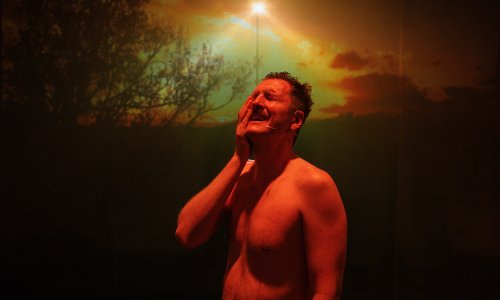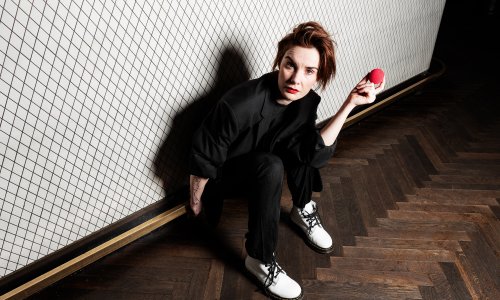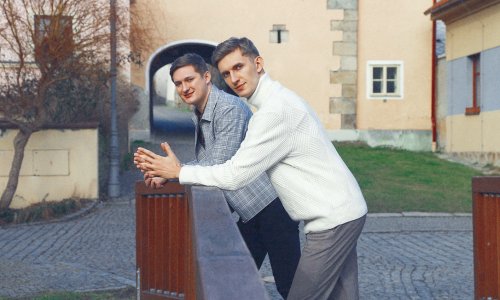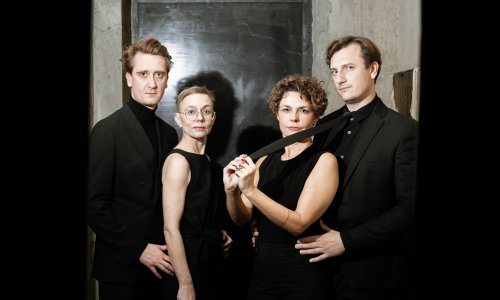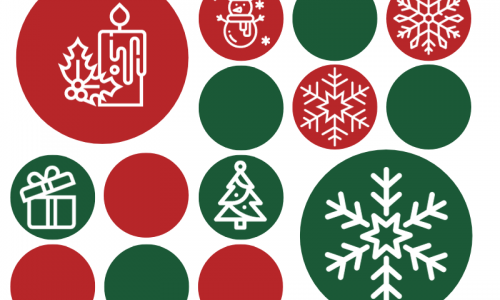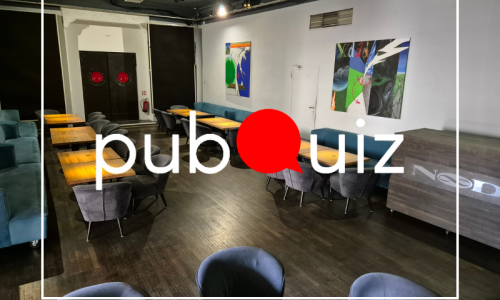Pavel Příkaský
TRANSGENIC MYTH
Curated by: Pavel Kubesa
30. 5. - 14. 7. 2019
---
I am interested in the new Sphinx
The real and the abstract mix in Pavel Prikasky’s pictures like fluids in laboratory solutions, the picture layers simulate the surface of a body or systems of internal material changes. Currents of nutrients flow through the painting, the pictures carry a micro world, hybrid physical bodies appear. He links to current phenomena such as genetic modification or medical practice. He approaches his painting as in growing a culture, like a live tissue, bio-matter.
PK: Transgenic Myth? Are you expecting the arrival of a trans-human era?
PP: I am thinking about current phenomena, which are either natural, or human, or which are probably outright phenomena, in which it is not clear, whether they are natural or human: acid rain, genetic engineering etc… That is the way I consider pictures, in the belief that, a new hybrid live organism will form under my hands, an organic thing. Paint is a biological material, more specifically, a hybrid biological material, in which the surface and depth are constantly permeating. I approach painting as work with biological materials in a process of various modifications or infection of their DNA by foreign genes, that is, trans-genesis.
PK: I sense them as limits, within which I can mix visions of the near and far future, something somehow higher, mythical.
PP: Yes. You can say that.
PK: For me the question of a ‘’transgenesis myth’’ is linked to a vision of a futuristic mythology, with the birth of a new mythological creature, a transhumanistic creation. Historically I understand a myth as something which is not coded like a narrative, but is taken as a given thing, like a framework for life and its perception: a person does not realise a myth, ‘’ a person lives in a myth’’. A myth is thus irrational.
Genetic engineering, biotechnology, prosthetics, biohacking or cyborgation are once again products of modern western rationality and desires for absolute control of life and evolution. I ask myself however whether the route of transhumanism, followed by the cult of extropistic vision and technological singularity is not growing the roots of a new irrationality, a new cosmic myth. Maybe we live in a time when we can imagine the myth that is coming, and that we are one of the last generations which will (in the way that we understand rationality) realise it.
PP: I am interested in the present, or visions, clues to the future in the present. I have thought about the idea that a new mythological creature, which before had wings and the body of an animal, could have new attributes in the future, two hearts for instance, because they can be grown from pig tissue, will have four hands, so that it can manage more activities and work and their attributes will be cobs of modified corn.
PK: I understand, you are interested in a new Sphinx. A creature in which mythology and technology become one.
The last time we talked about how you understand figuration, and in what you see it’s potential. I was interested in your idea about figurative painting as the picturing of a performer, or a record of an imaginary performance. The picture thus becomes the emergence of a wider conceptual-choreographic consideration. In the current pictures however we are following a movement in the direction of picturing at the level of a microorganism, a capillary of a cardiovascular system or the lymphatic system of an animal. I have a feeling that here, more and more, an interest is appearing in a laboratory method of research, a visuality characteristic for the sight of an electron microscope or fictional and ancient atlases of anatomy. What does this interest come from?
PP: How can I say it? I take the picture area like a material, where the micro world or links to various internal systems mix, but at the same time I try to also insert an illusionary motive. For instance a snake appears in the picture, which is a symbol of medicine, then in other places a sort of hybrid claw. In actual fact I don’t worry about it too much, but I work with the painting material more and more as a live material. That is why there is a greater tendency to the appearance of life at the level of a microscope. There is there however, a link to bodily fluids, biological solutions or strict materiality in the process of mixing. The principle with which I work with in the picture is thus not necessarily a picturing of the world of simple microorganisms.
In terms of focus, I connect to the previous exhibitions, when the issue of the human body in today’s world and modern science was being considered, and the themes of current medicine and its alternatives was opened up. Here the interest was about how we are dealing with the present on a biological and technological level. We find ourselves in a world which was created in the last thirty years but on a biological level life developed over millions of years. Through painting I find a solution both for this theme and reflecting on it and catch a hold of it using the current means of traditional media. Here I re-evaluate for myself what is abstract painting: it is not just ‘’colour field painting’’, but there are also specific links and images. I am interested in hybrid phenomena and I try to transfer them to my own thoughts about a picture.
PK: In numerous previous projects in which you have presented together in a pairing with Miroslava Večerová, you are developing a multimedia strategy and a wide characteristic visual register. What is it like to free oneself from the other media possibilities and concentrate only on the classic regime of hung pictures.
PP: For me it is natural work, I also concentrate on painting in collaborative work. However it is pleasant now because a coherent series could be created in a single entirety and a continual engagement. Possibly, because I sometimes feel that something is missing here …, but I want to overcome that feeling of absence. I try to ensure that everything that stands in the background, plays out only in the painting. Expanding painting elsewhere, into objects, videos, photographs or an assembly is not a new step for me. I have been doing it for several years but now it is important challenge for me to find it just through painting, in pictures.
PK: You have already indicated that you are always interested in some problem in a picture. I remember Kokoliov’s words that, in your pictures abstract flatness (so characteristic for microscopic study) uncontrollably changes with illusionality, in a sort of figurative opportunity. How do you feel the role, relationship of abstraction and figuration in painting? Where do you see the possibilities for this relationship?
PP: I am interested in the tension between both things in the same place, the constant jumping between flat structure and illusionary depth. Even though you see the abstraction (structure), there is still tension there, that it is abnormally magnified skin, or perhaps the result of genetic modification, a new tissue.
PK: Yes, once you said that “the micro world is a body from extremely close up”. Abstraction could also be a view to within, under the surface of the body, to get under the bodies skin. At extreme closeness to the surface of a body a new optic exists, new horizons of visual space open up. It is the body within touch.
PP: But the “joke” is also here in the fact that, tissue or a drop of water looks like a pure abstract painter’s picture, but it is real, that is to say realistically pictured. Its rhythm reminds one of an abstract painting, but it is a drop of water, full of a certain vitality, rich in life. A drop of sea water.
PK: Previously, relatively recently, the picture was in decline, it almost was not suitable to only have exhibitions of paintings. How do you evaluate its position as part of the current tendency, why is it, as the case may be, current once more.
PP: I think that now is a favorable time for painting. Its decline was probably a characteristic feature of the local artistic environment. Painting was a problem which it was necessary to resolve. I am not trying to criticize the dominant line here, it was a logical step, painting was exhausted in a certain way. But currently it has filtered itself, new possibilities have crystallized. Painting was not enough for me myself, I needed another solution, such as assemblies, objects, videos, but currently I perceive it that these things naturally merge together.
PK: Exactly, I have a feeling that there is an idea space here and a mood to once again develop strictly painting. Despite this however, in your pictures you use various foreign materials, fringes, which emerge from its surface and yet only in a certain sense expand outside its format, awaken a haptic field of perception, reorganize the surrounding space, intoxicate its materials.
PP: For me it is however still above all painting. I work with them in a painter’s way, I reflect on them like with a painters trace. But I do not get uncertain because of privilege, the role of classic pictures, and also what I think of them as a bio material. The fringe is a live moment, a moment of movement, that is something which undermines the courage of the picture. It is also a sort of a tactile thing, and also a sort of animation.
PK: Animation in what sense?
PP: In the sense of movement, it is an attempt to get something moving, which did not succeed. A sort of a current poured out from the paints…, it is a continual movement into space. And it also plays it with illusion: it is a flow of fluids. The fringes rise out of the area of the picture.., they are mistakes.., that is, some new possibilities.
PK: Similar to mistakes in DNA, which await their repair…
Pavel Kubesa, Pavel Příkaský
Prague
26.5.2019
